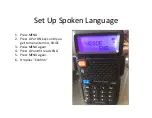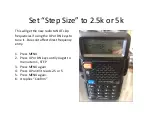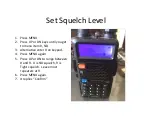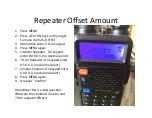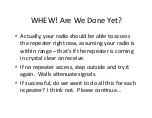
Programming your TX Frequency
I’m now programming the PAPA-‐14
repeater’s INPUT frequency of 441.580.
I just entered 4 4 1 5 8 0 on the keypad.
The lower row is irrelevant here. For
the benefit of the new students, the
INPUT frequency is the frequency the
repeater RECEIVES on, and your radio
RECEIVES on.
You must CALCULATE your INPUT
frequency by manually adding or
subtrac<ng either 0.6 MHz for 2-‐
meters, or 5.0 MHz for 70cm.

